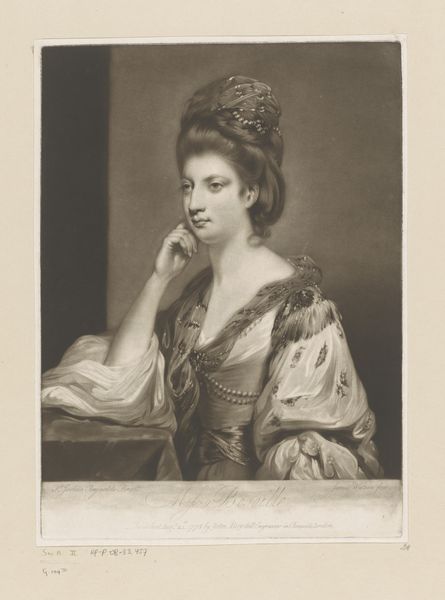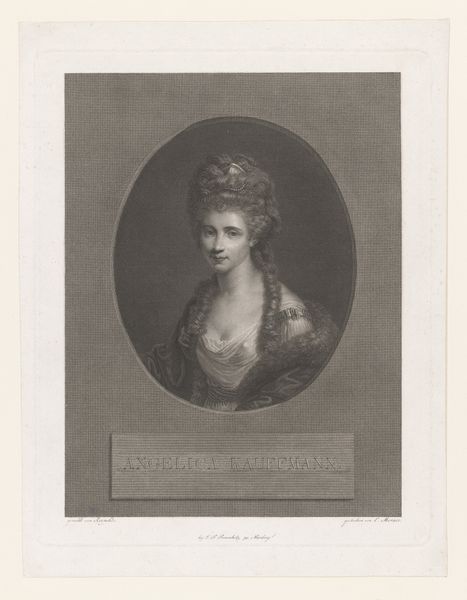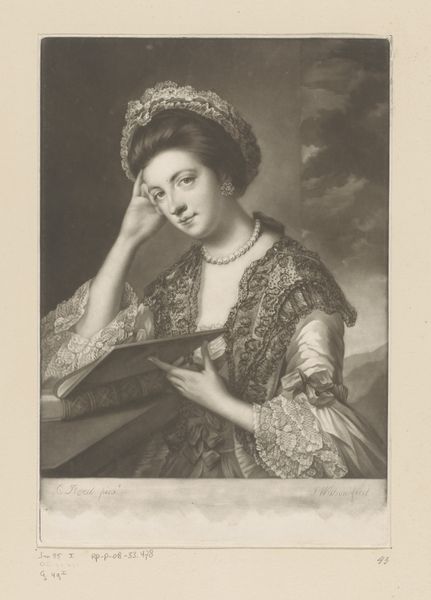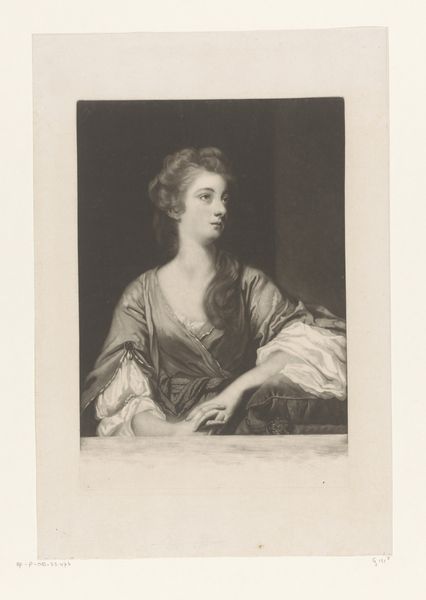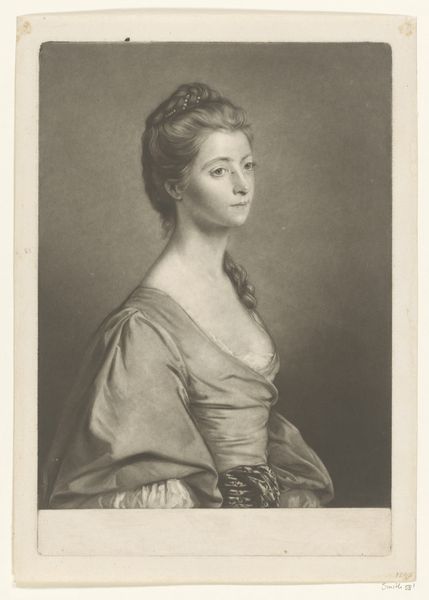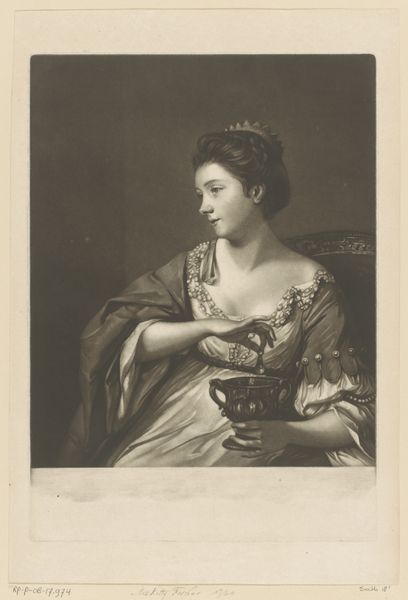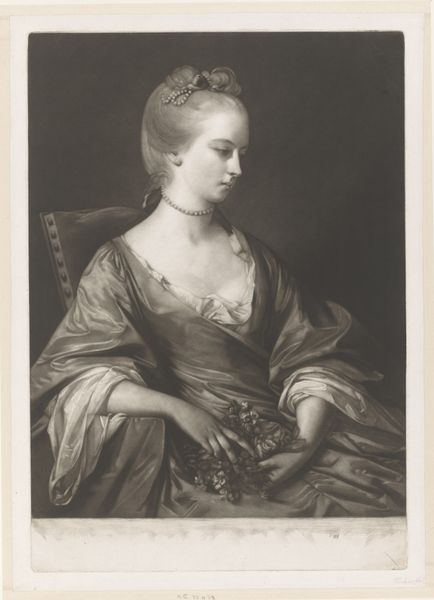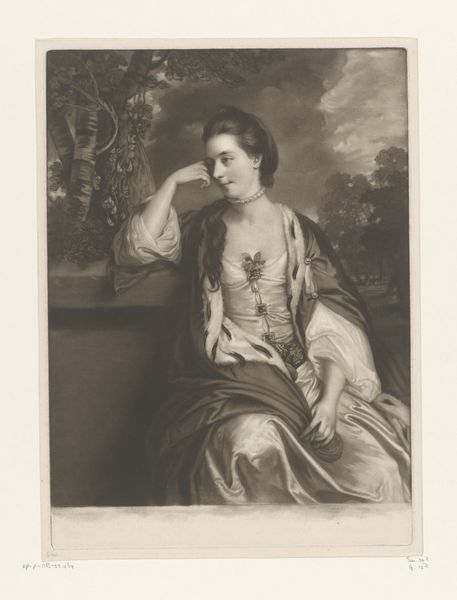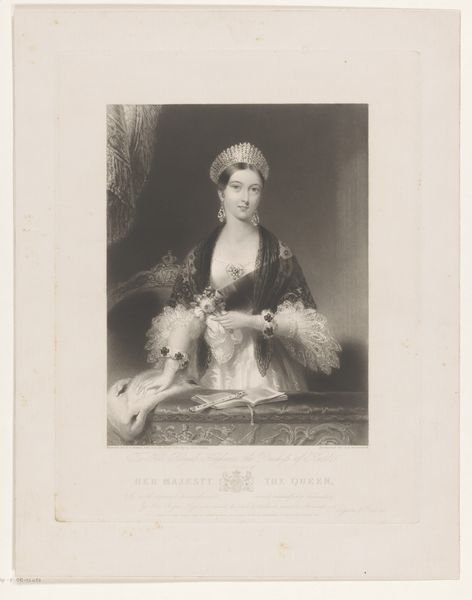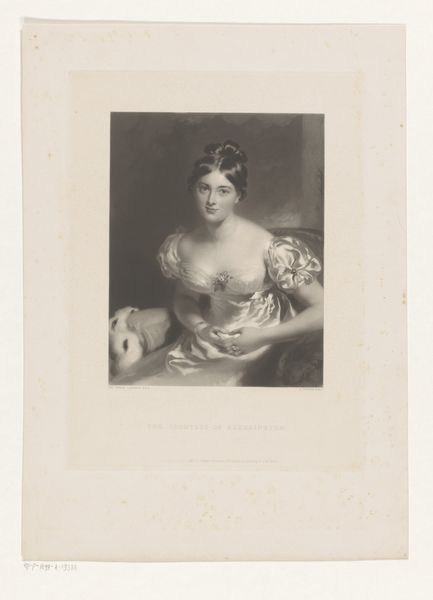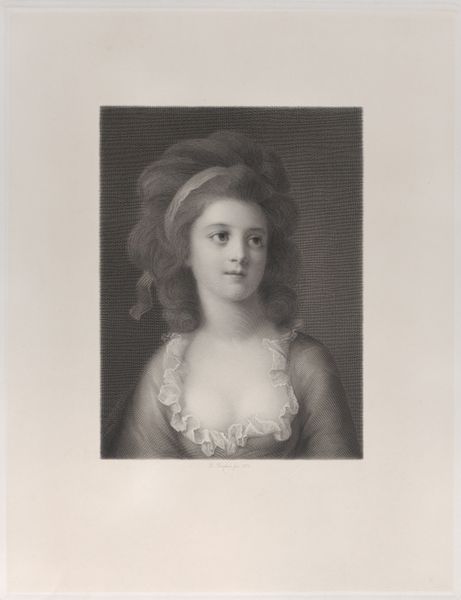
Dimensions: height 391 mm, width 286 mm
Copyright: Rijks Museum: Open Domain
Editor: So here we have "Portrait of a Woman, possibly Mrs. Bull," made sometime between 1750 and 1790 by James Watson. It’s an engraving. The shawl she’s wearing looks so soft, almost luminous, despite being rendered in monochrome. What’s your take on this, given the materials used? Curator: The choice of engraving is particularly interesting, as it speaks to the wider availability of imagery during this period. This isn’t a unique painted portrait, carefully crafted for a single patron, but a reproducible image. It allows for a broader consumption of "Mrs. Bull's" likeness and, perhaps, aspirations of her social class. Consider how the lines are etched; what does this labor-intensive process tell us about the value placed on portraiture and its dissemination? Editor: That makes sense! So it's less about the individual sitter, and more about the mass appeal and, I guess, even the commodification of her image? Does the material – the engraving – dictate that to some extent? Curator: Exactly! The act of engraving necessitates a shift. It’s about translating a potentially opulent display of wealth and status, inherent in a painted portrait, into a commodity accessible, although certainly not universally, to a wider market. It's about creating an item for purchase and distribution, tying the representation of status to systems of production and consumption. The level of detail in the engraving, emulating textures and light, only further enhances its desirability. What effect might that process of creating so many images have on the original portraiture as high art? Editor: It reframes it, I suppose. It makes you consider who *couldn’t* afford the original, and who then bought the print, and why. It’s made me consider art’s accessibility at that time, which is something I’ve never thought of. Curator: Precisely! And by focusing on the materials and modes of production, we move beyond simply admiring the aesthetic qualities to questioning the socioeconomic context in which art is created and consumed. Editor: I learned a lot today; it shifted my focus on portraiture from simply documenting someone's image to understanding art's social and material contexts.
Comments
No comments
Be the first to comment and join the conversation on the ultimate creative platform.
